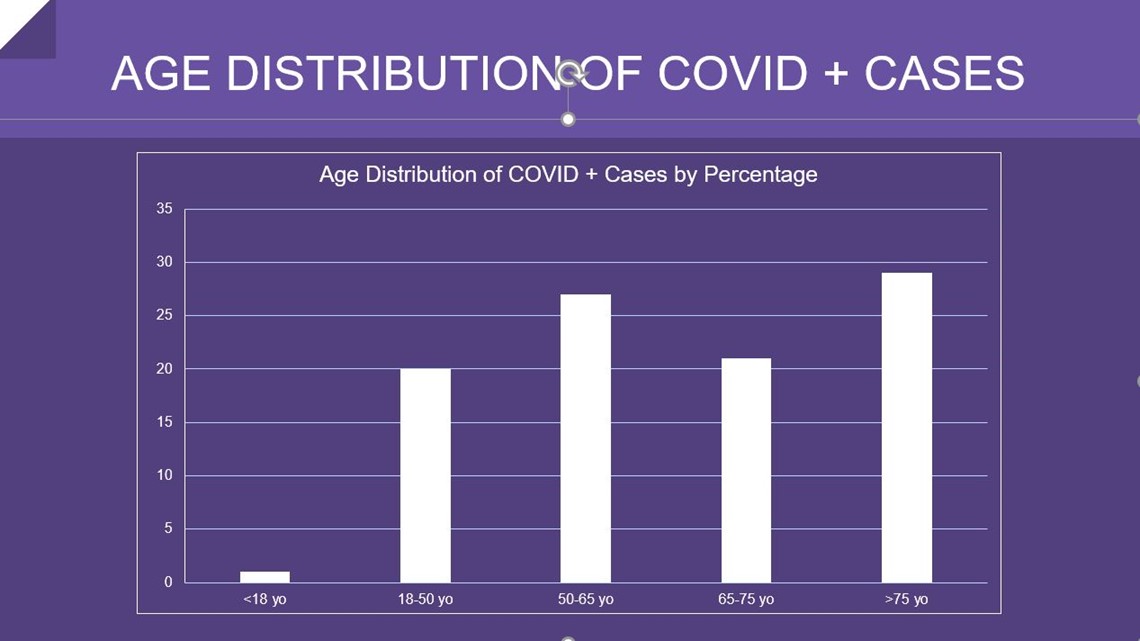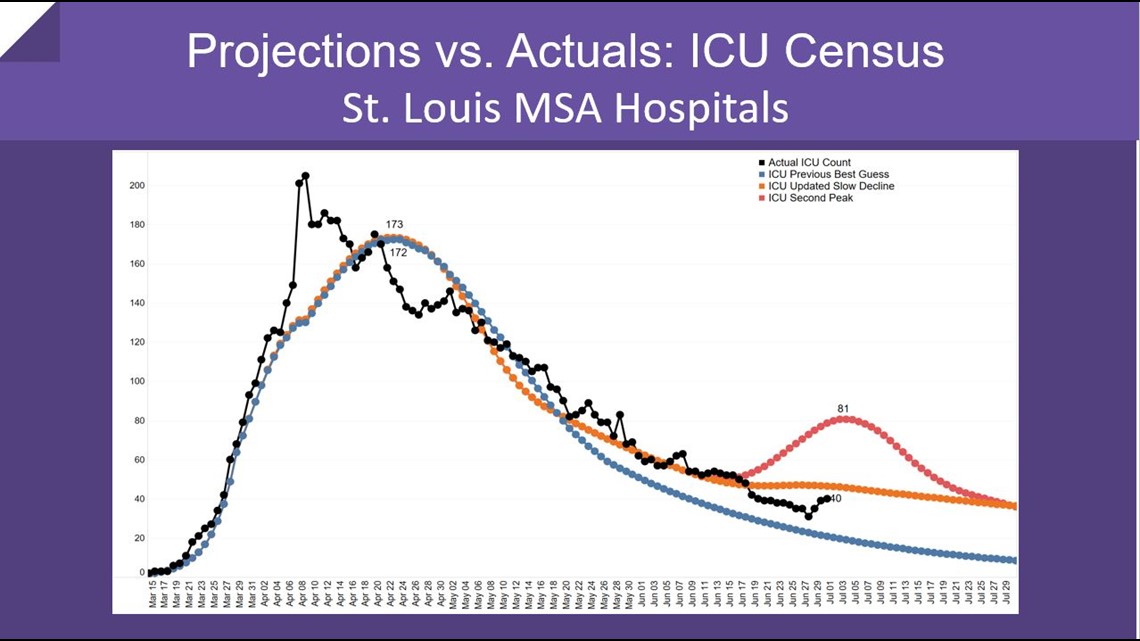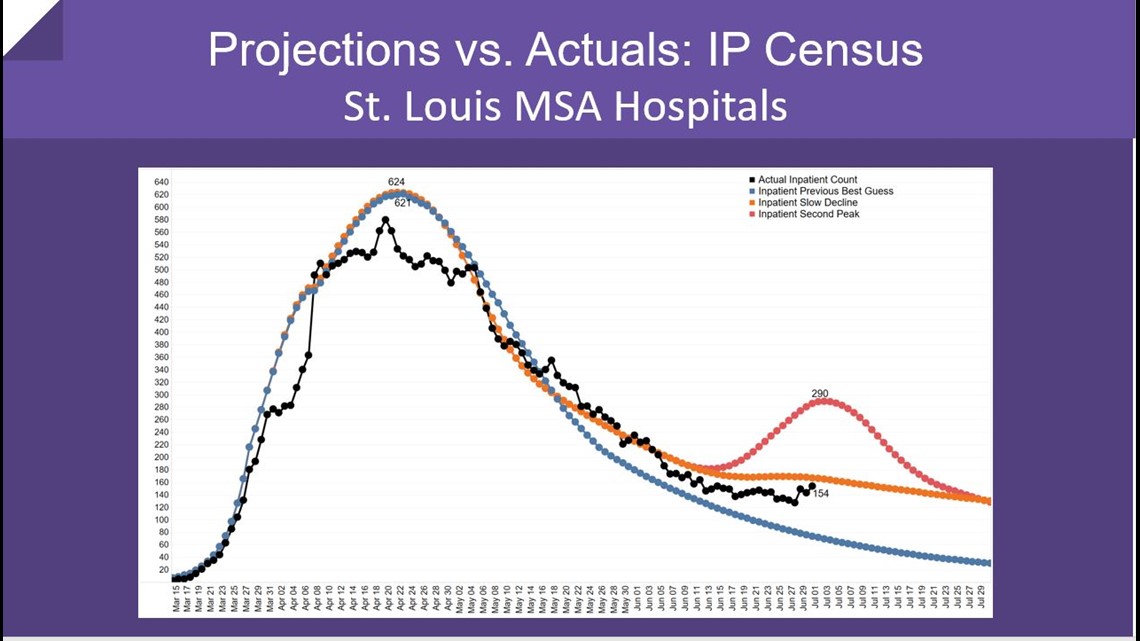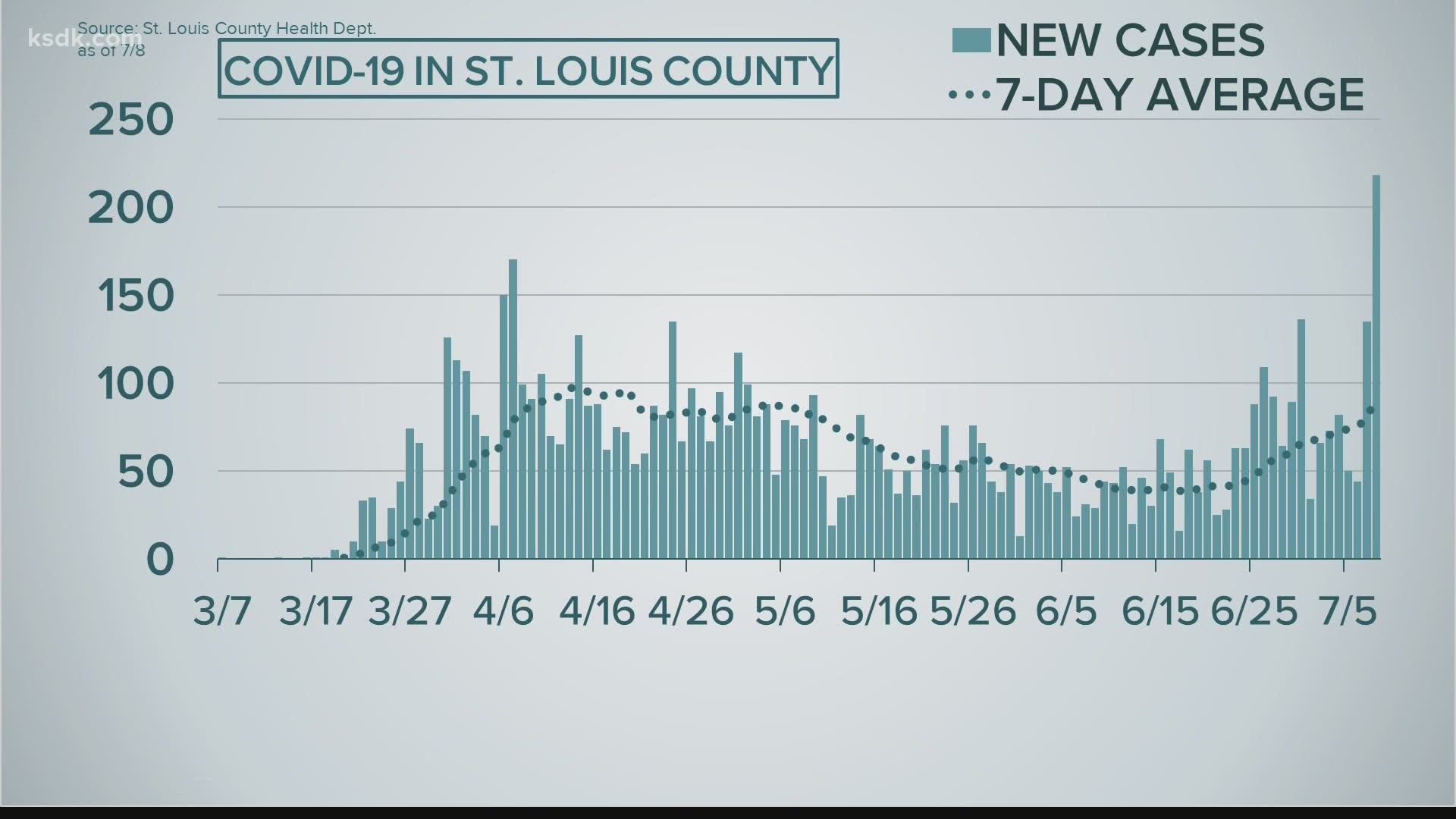ST. LOUIS — The St. Louis Metropolitan Pandemic Task Force reported the highest single-day increase in new COVID-19 patients in area hospitals since May 19, a statistic the task force leader called "quite worrisome."
"The data are quite worrisome, particularly those 30 new admissions that we saw," Dr. Alex Garza, head of the task force, said Wednesday. "And as I've said before, hospitalizations and admissions are a lagging metric. And so we suspected that once we saw a rise in cases, that the rise in admissions and hospitalizations would soon follow."
Also lagging are COVID-19 test results which Dr. Garza said could hurt the region's ability to track and contain the virus. Dr. Garza said the task force is getting reports that results are taking up to ten days. 5 On Your Side has heard from people waiting more than two weeks for their COVID-19 results.
Garza said while hospitals can test patients much quicker with what he called "micro labs" on-site, he said widespread testing of the general public is needed to adequately track the new coronavirus and results that take longer than a few days are of little help to contact tracers.
On Tuesday, Missouri reported 773 new cases after a few days of lower-than-average increases over the holiday weekend. On Wednesday, the state reported 575 new cases, the second-largest single-day increase the state has reported.
The state also reported a slightly above-average number of new tests Tuesday, 8,603, but the state's positivity rate increased. The state reported 6,992 new tests Wednesday, and the positivity rate slightly increased again.
St. Louis County recorded its highest single-day increase Wednesday with 218 new cases. The previous high was set on April 7, when the county reported 170 new cases.
You can watch the full task force briefing below or on the task force's Facebook page.
Here is the full break down of data from the task force:
- New hospital admissions (data lagged two days) increased — from 19 Tuesday to 30 Wednesday.
- The seven-day moving average of new hospital admissions (data lagged two days) increased — from 20 Tuesday to 21 Wednesday.
- The seven-day moving average of hospitalizations increased — from 161 Tuesday to 164 Wednesday.
- Inpatient confirmed COVID positive hospitalizations decreased — from 177 Tuesday to 171 Wednesday.
- Inpatient suspected COVID positive hospitalizations increased — from 138 Tuesday to 139.
- The number of confirmed COVID positive patients in the ICUs remained the same — 41 on Tuesday and Wednesday.
- The number of confirmed COVID positive patients on ventilators increased — from 21 Tuesday to 25 Wednesday.
- Across the system hospitals, 29 COVID-19 patients were discharged yesterday, bringing the cumulative number of COVID-19 patients discharged to 3,053.
Dr. Garza said while the increase of cases in Missouri has largely been in younger populations who are less likely to become very sick, it makes sense that the increase is hitting the hospital systems.
"So even though those cases have primarily affected the younger populations, it's really a matter of time until the virus finds a susceptible host that needs to be hospitalized," Dr. Garza said.
According to task force data, people over the age of 75 account for nearly 30% of the suspected or confirmed COVID-19 cases in the area's hospitals while people under the age of 50 make up just 21%.


When asked about a potential shortage of personal protective equipment that hospitals in other parts of the country have reported, Dr. Garza said the St. Louis area is in good shape right now. He said those shortages in other parts of the country could affect the St. Louis area at some point.
"What we're witnessing around the country is the dramatic surge in cases in people admitted to the hospitals," Dr. Garza said. "Everybody competes on a global market for personal protective equipment, and St. Louis is no different. So when you see cases increasing in other parts of the country, there are obviously going to attempt to buy more personal protective equipment out of that same pool, which then it's decreased for everybody else."
During Monday's briefing, Dr. Garza said the St. Louis area had seen an increase in COVID-19 cases and hospitalizations in recent weeks, but that development was expected due to the loosening of restrictions around the area.
Dr. Alex Garza, the head of the pandemic task force, said the area is most closely following the task force's "slow decline" model due to the increase in cases from the last time the task force provided modeling data. The last time the task force showed modeling data, the area was closer to the task force's "best guess" model, which is more optimistic.
"It's not to be unexpected from all the from the relaxation that we've had in in in some of our opening of businesses and things like that again," Dr. Garza said. "Hopefully we can get this number down again with interrupting transmission from instituting mask, wearing things like that.




For a full county-by-county breakdown of cases in the state, use our interactive map. Some of the local county numbers come from local health departments and may not match data from the DHSS.

